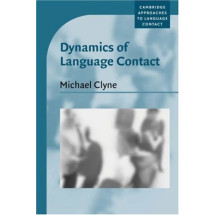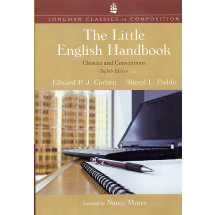Analyzing Grammar is a clear introductory textbook on grammatical analysis, designed for students beginning to study the discipline. Covering both syntax (the structure of phrases and sentences) and morphology (the structure of words), it equips them with the tools and methods needed to analyze grammatical patterns in any language. Students are shown how to use standard notational devices such as phrase structure trees and word-formation rules, as well as prose descriptions. Emphasis is placed on comparing the different grammatical systems of the world’s languages, and students are encouraged to practice the analyses through a diverse range of problem sets and exercises. Topics covered include word order, constituency, case, agreement, tense, gender, pronoun systems, inflection, derivation, argument structure and grammatical relations, and a useful glossary provides a clear explanation of each term. Accessibly written and comprehensive, Analyzing Grammar is set to become a key text for all courses in grammatical analysis.
1 Grammatical form 1
1.1 Form, meaning, and use 1
1.2 Aspects of linguistic form 2
1.3 Grammar as a system of rules 4
1.4 Conclusion 5
2 Analyzing word structure 7
2.1 Identifying meaningful elements 7
2.2 Morphemes 12
2.3 Representing word structure 14
2.4 Analyzing position classes 18
2.5 A typology of word structure 22
Exercises 24
3 Constituent structure 26
3.1 Ambiguity 26
3.2 Constituency 28
3.3 Hierarchy 32
3.4 Syntactic categories 33
3.5 Tree diagrams: representing the constituents of a clause 38
3.6 Pronouns and proper names as phrasal categories 44
3.7 Conclusion 46
Practice exercises 47
Exercises 47
4 Semantic roles and Grammatical Relations 51
4.1 Simple sentences and propositions 52
4.2 Arguments and semantic roles 53
4.3 Grammatical Relations 55
4.4 Adjuncts vs. arguments 58
4.5 “Indirect objects” and secondary objects 61
4.6 Conclusion 62
Exercises 63
5 Lexical entries and well-formed clauses 66
5.1 Lexical entries 66
5.2 Argument structure and subcategorization 67
5.3 Properties of a well-formed clause 72
5.4 Uniqueness of oblique arguments 79
5.5 Zero-anaphora (“pro-drop”) 79
5.6 Further notes on English Phrase Structure 81
5.7 Conclusion 83
Exercises 83
6 Noun Phrases 87
6.1 Complements and adjuncts of N 87
6.2 Determiners 89
6.3 Adjectives and Adjective Phrases (AP) 90
6.4 Possession and recursion 92
6.5 English NP structure (continued) 97
6.6 Conclusion 98
Practice exercise 98
Exercises 98
7 Case and agreement 102
7.1 Case 102
7.2 Agreement 111
7.3 Conclusion 118
Exercises 119
8 Noun classes and pronouns 128
8.1 Noun classes and gender 128
8.2 Pronouns 135
Exercises 143
9 Tense, Aspect, and Modality 147
9.1 Tense 147
9.2 Aspect 152
9.3 Perfect vs. perfective 158
9.4 Combinations of tense and aspect 161
9.5 Mood 163
9.6 Modality 165
9.7 Conclusion 168
Exercises 169
10 Non-verbal predicates 173
10.1 Basic clause patterns with and without the copula 174
10.2 Existential and possessive clauses 180
10.3 Cross-linguistic patterns 181
10.4 A note on “impersonal constructions” 185
10.5 Further notes on the predicate complement (XCOMP) relation 187
10.6 Conclusion 189
Exercises 190
11 Special sentence types 196
11.1 Direct vs. indirect speech acts 196
11.2 Basic word order 197
11.3 Commands (imperative sentences) 199
11.4 Questions (interrogative sentences) 203
11.5 Negation 211
11.6 Conclusion 214
Practice exercise 214
Exercises 215
12 Subordinate clauses 218
12.1 Coordinate vs. subordinate clauses 218
12.2 Complement clauses 220
12.3 Direct vs. indirect speech 224
12.4 Adjunct (or Adverbial) clauses 227
12.5 Relative clauses 230
12.6 Conclusion 240
Practice exercise 241
Exercises 241
13 Derivational morphology 247
13.1 Stems, roots, and compounds 248
13.2 Criteria for distinguishing inflection vs. derivation 250
13.3 Examples of derivational processes 253
13.4 Word structure revisited 259
13.5 Conclusion 265
Practice exercise 265
Exercises 266
14 Valence-changing morphology 270
14.1 Meaning-preserving alternations 271
14.2 Meaning-changing alternations 277
14.3 Incorporation 280
14.4 Conclusion 282
Practice exercises 283
Exercises 284
15 Allomorphy 288
15.1 Suppletion 290
15.2 Morphophonemic changes 292
15.3 Rules for suppletive allomorphy 296
15.4 Inflectional classes 297
15.5 Conclusion 299
Practice exercises 301
Exercises 302
16 Non-linear morphology 304
16.1 Non-linear sequencing of affixes 305
16.2 Modifications of phonological features 307
16.3 Copying, deleting, re-ordering, etc. 309
16.4 Inflectional rules 312
16.5 Conclusion 313
Exercises 314
17 Clitics 316
17.1 What is a “word?” 317
17.2 Types of clitics 319
17.3 Clitic pronouns or agreement? 325
17.4 Conclusion 329
Practice exercise 329
Exercises 330
Paul R. Kroeger is Associate Professor and Head of the Department of Linguistics at the Graduate Institute of Applied Linguistics, Dallas.












